The art-cum-furniture of Nacho Carbonell evokes a kind of surreality that might be familiar to fans of Salvador Dali or Max Ernst. A seat is concealed amid a tangle of pell-mell steel quills, like a perch within a giant, carved-out burr; the back of one chair towers up into a ladder, the top of which erupts into an engorged alien womb.
One might expect Carbonell – whose long, wild hair almost begs for a giant fan so that it might be permanently caught in a dreamlike flow – to create such fantasies in an equally otherworldly locale. The edge of a cliff in his native Spain, maybe, or a candle-lit cave soaked in absinthe.
Carbonell, though, operates out of a studio in Sectie C, a series of trim, converted warehouses in the low-key Dutch city of Eindhoven. From the outside, it's inoffensively grey. Inside, dozens of makers hustle to put together Carbonell's fantasies, which will then be shown around the world in galleries, showrooms and avant-garde homes.
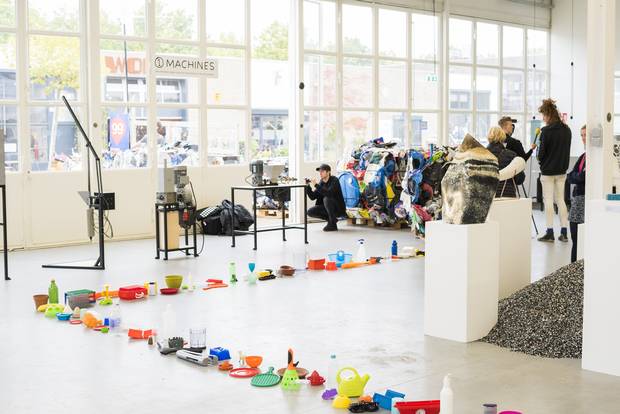
Sectie C, a series of trim, converted warehouses, hosts designer Nacho Carbonel’s studio.
Max Kneefel
Studios such as Carbonell's are the reason people visit Eindhoven. The place might not have the wild party vibe of Amsterdam (which could actually be a good thing, depending on what you are looking for) or the daring architecture of Rotterdam (save for a beguiling, slug-shaped thing called the Blob in the middle of the town), but it's a ceaselessly percolating hub of innovation much beloved by seekers of incredible design.
Design and innovation has been at the core of Eindhoven since the city started to boom in the late 19th century. It's where electronics giant Philips was founded and where the company pioneered electric shavers, cassette tapes and compact discs, among other things.
Although Philips has since left, relocating its headquarters to Amsterdam and moving its factories offshore, the city has continued to be a creative centre. The Organization for Economic Co-operation and Development has named it the most inventive city in the world, noting that it produces more patents per person than anywhere else, including many places in innovation-obsessed California.
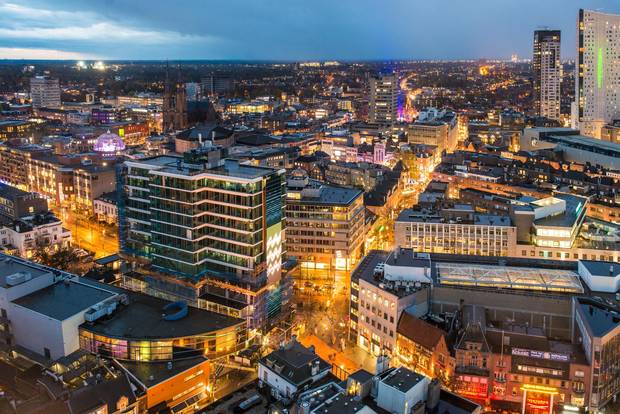
The Organization for Economic Co-operation and Development has named Eindhoven the most inventive city in the world.
Blow UP Media
Design Academy Eindhoven is central to the city's success. Fittingly located in the former Philips offices, next to a great museum that explores the company's history, its faculty and alumni includes Ilse Crawford (who has designed for IKEA, Soho House and many more), Marcel Wanders (who has overseen more than 1,700 design projects for everyone from Puma to Swarovski) and Carbonell. ("Eindhoven doesn't teach you how to design," he says of the experience. "It teaches you how to think.")
Upon graduation, many students choose to stay and work in the city. The spacious factories left in the wake of Philips's departure offer many affordable studios. "It's cheaper than London," says Jetske Visser, an alumna who now co-runs a studio called Martens & Visser that makes, among other things, light fixtures that seem to bob and morph mid-air like floating soap bubbles. Plus, "everyone here works really hard," she adds, pointing to a culture of excellence always pushing for creative successes.
A smart place to get a sense of the scene is Kazerne. Once a cavernous military barracks, it's now a restaurant and gallery that will also be adding hotel rooms in 2018. The food – hearty, Italian-inspired dishes such as polenta with Taleggio cheese and seasonal mushrooms – is excellent. But the real treat is the rotating shows, featuring boundary-pushing designs, many produced by young Eindhoven academy grads.
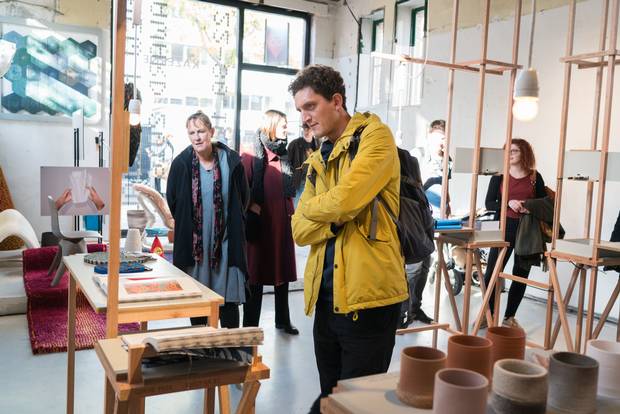
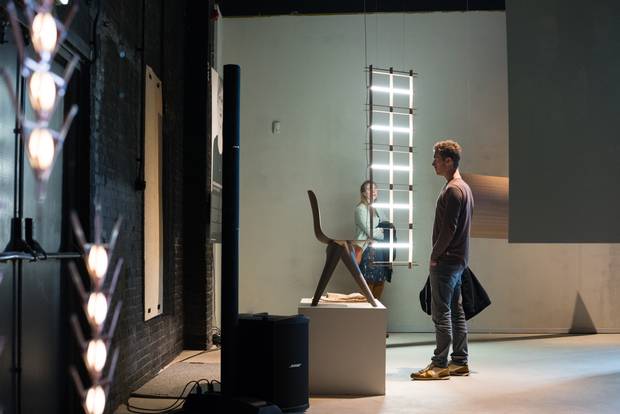
Kazerne hosts rotating design shows in a gallery space that was formerly a military barracks.
photos by Ralph Roelse
On a recent night, in a show called Escape, a kinetic sculpture called In 20 Steps, by Studio Drift, energized the space with jointed glass bones gracefully gliding like birds' wings, a study of the mechanical ways humankind has tried to simulate flight and break away from the confines of our own biological limits.
From the same show, more practical – if still mind-bending – pieces included "bio-textiles" by Jalila Essaidi, which consisted of fabrics made from cellulose extracted from cow manure, and a sustainable chair by Christien Meindertsma & Enkev made from flax seeds.
Another place to feed both the eyes and the mind is the studio, gallery and restaurant of notable designer Piet Hein Eek. The 108,000-square-foot former Philips factory is the result of what a lucky designer might do if given free rein over such a large space: not only turn it into a workshop (the place buzzes with an army of people sawing, assembling and sanding Hein Eek's eclectic wares), but a test lab for creativity of all sorts.
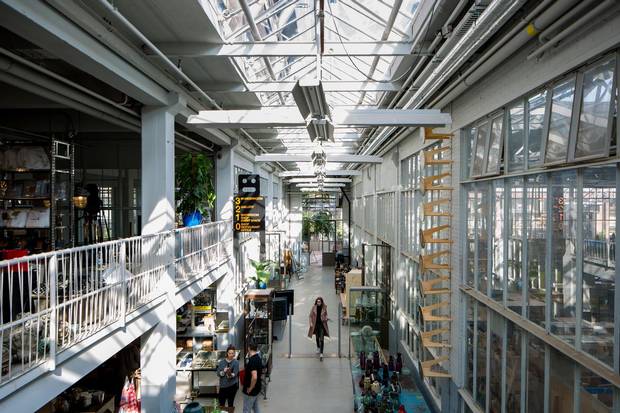
An old Philips factory now holds the studio, gallery and restaurant of notable designer Piet Hein Eek.
Nick Bookelaar
Enchanting, if odd, experiments abound, including giant, wooden; Easter Island-like heads that dot the showroom and a metal chair the size of a pool table that only seats one person. The restaurant (which serves a delicious pumpkin flammkuchen) too feels madcap. Its mix of decor includes opulent chandeliers, velvet sofas and tables that look like they were fashioned from driftwood, all within a massive industrial hangar.
When it was owned by Philips, Hein Eek's factory was known as Strijp-R. Another, much larger Philips facility called Strijp-S has also been converted into design spaces, although it houses many, many more brands. Each year, in October, it also hosts nearly 300,000 visitors as the central hub of Dutch Design Week, the second-largest design show in Europe after Milan's famed Salone (Eindhoven's population is only 220,000).
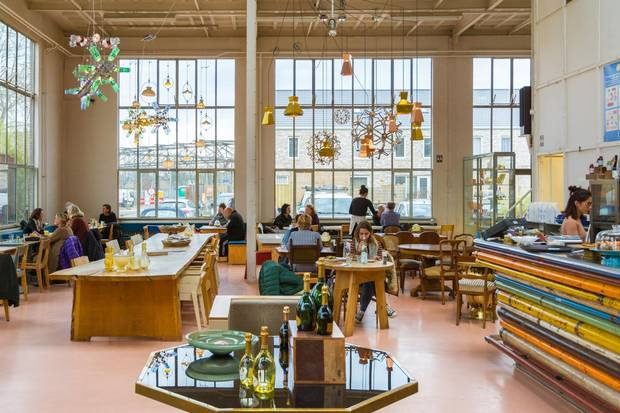
The Piet Hein Eek restaurant.
Bobby Born
Walking among warehouses, looking at designs that challenge just about everything conventional, it's almost necessary to wonder how so unassuming a place can produce so much imagination.
Ketelhuis is a restaurant in Strijp-R, in a converted factory so large that the couple of dozen tables set out don't even begin to fill the enormous hall. Swings are suspended from the ceiling, though, adding a playful element that softens the industrial edge. Bobbing back and forth on a swing, gleeful like a child, one looks into the vacant part of the room and the mind just starts to percolate: What can fill this void? Eindhoven is blessed with many such voids and creative minds dreaming to fill them.
The writer was a guest of the Netherlands Board of Tourism (holland.com). It did not review or approve this article.
